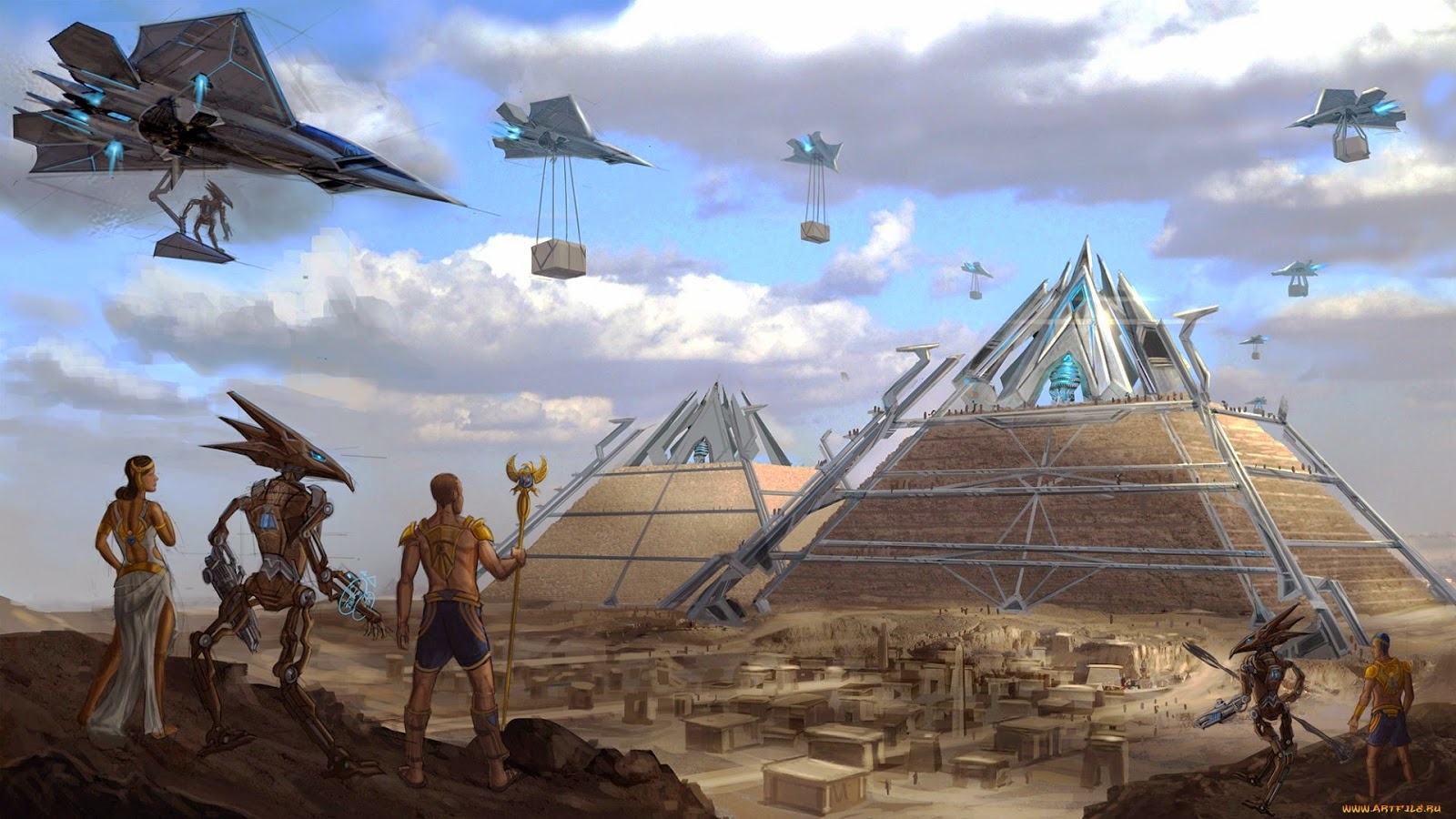Throughout human history, ancient art has served as a window into the cultures, beliefs, and daily lives of early civilizations. From cave paintings and sculptures to intricate carvings and pottery, these artworks offer a glimpse into the past. Yet, some ancient depictions have sparked curiosity and debate due to their apparent resemblance to modern technology. The exploration of these mysterious artworks raises intriguing questions: Did ancient civilizations possess advanced knowledge, or are these depictions merely coincidental interpretations of the unknown?

Ancient Art and Advanced Technology: A Historical Perspective
Ancient art often reflects the technological achievements and conceptual understanding of the time. For instance, the Egyptians’ precise and sophisticated construction methods for the pyramids and the Greeks’ advancements in metallurgy and machinery are well-documented. However, some depictions in ancient art seem to suggest a level of technological sophistication that surpasses what we traditionally attribute to these early societies.
One of the most striking examples is the Dendera Light, a carving found in the Temple of Hathor at Dendera in Egypt. This depiction shows what appears to be a large, bulbous object, resembling a modern electric light bulb, along with a snake-like figure. Some researchers argue that this could represent an ancient form of lighting technology, though mainstream scholars interpret it as symbolic rather than literal.

The Saqqara Bird: Ancient Aviation or Symbolic Representation?
The Saqqara Bird, a wooden artifact discovered in the Saqqara necropolis in Egypt, has fueled speculation about ancient flight technology. Dating back to approximately 200 BCE, this artifact is shaped like a bird and has features reminiscent of modern gliders or aircraft. While some skeptics argue that the artifact is purely symbolic or decorative, others propose that it might represent an ancient understanding of aerodynamics or flight.
The Saqqara Bird’s aerodynamic design and lightweight structure suggest that ancient Egyptians may have had a rudimentary grasp of flight principles. However, whether this knowledge was practical or purely theoretical remains a subject of debate.
Mesoamerican Mysteries: Advanced Knowledge in Ancient Art?
In Mesoamerica, ancient art and architecture often depict advanced knowledge and astronomical alignment. The Mayan Calendar, with its precise cycles and complex mathematical calculations, demonstrates a sophisticated understanding of time and celestial events. Similarly, the Nazca Lines in Peru, vast geoglyphs etched into the desert, are best viewed from the air, leading some to wonder if the Nazca people had aerial technology or if these lines served a different, unknown purpose.
Some theorists suggest that these cultures might have had access to advanced knowledge or technology that has since been lost or forgotten. The alignment of structures with celestial bodies and the intricate designs in Mesoamerican art raise questions about the extent of their scientific understanding.
Ancient Astronaut Theory: Art as Evidence of Extraterrestrial Influence
The ancient astronaut theory posits that advanced extraterrestrial beings visited Earth in ancient times and influenced human civilization. Proponents of this theory argue that certain ancient artworks depict advanced technology or beings that could be interpreted as aliens. The famous Nebra Sky Disk, a bronze artifact from the Bronze Age in Germany, shows a depiction of the night sky with what some interpret as celestial objects or symbols related to extraterrestrial visitation.
Similarly, ancient texts and artworks from cultures around the world describe beings from the sky or gods with advanced technology. These depictions have been interpreted by some as evidence of contact with extraterrestrial civilizations.

Interpreting Ancient Art: Context and Symbolism
It’s essential to approach ancient art with an understanding of its cultural and symbolic context. Many artworks were created to convey religious beliefs, myths, and cosmological concepts rather than to represent literal technological advancements. The Temple of Seti I at Abydos, for example, features carvings that some interpret as modern technologies, but others argue that these images are the result of later modifications or misinterpretations.
Additionally, the Antikythera Mechanism, an ancient Greek analog computer discovered in a shipwreck, provides evidence of advanced technology in antiquity. This device, used to predict astronomical positions and eclipses, shows that ancient civilizations had sophisticated engineering knowledge, though it does not necessarily imply that they had access to modern technology.
The Future of Ancient Art Research
The investigation of ancient art and its potential links to modern technology continues to be a dynamic and evolving field. Advances in technology, such as 3D scanning and digital analysis, are allowing researchers to explore these artifacts in greater detail, revealing new insights and interpretations. As our understanding of ancient cultures grows, we may gain a clearer picture of how early civilizations perceived and represented their world.
Conclusion: Bridging the Past and Present
The study of ancient art and its potential connections to modern technology is a fascinating endeavor that bridges the gap between past and present. While some depictions may indeed reflect advanced knowledge or unexplainable phenomena, it is crucial to approach these interpretations with a balanced perspective, considering both the historical context and the symbolic meanings of the artwork.
As we continue to unearth and analyze ancient artifacts, we gain a deeper appreciation of the ingenuity and creativity of our ancestors. Whether these ancient depictions represent glimpses of lost technologies, symbolic representations, or mere coincidences, they remind us of the enduring mystery and wonder of human history.





